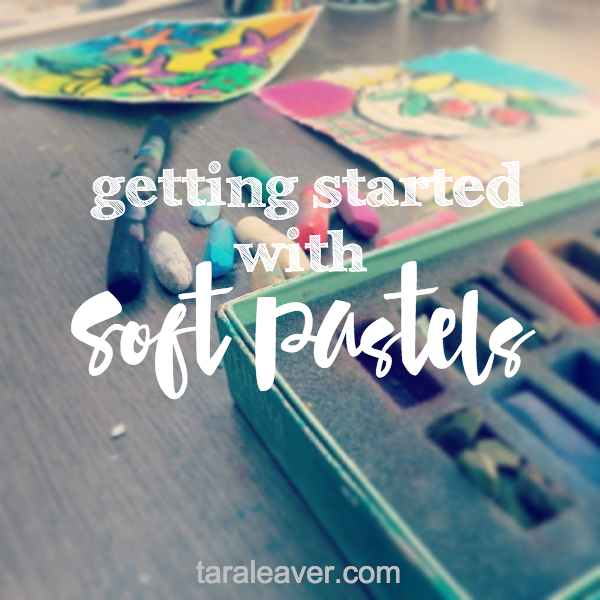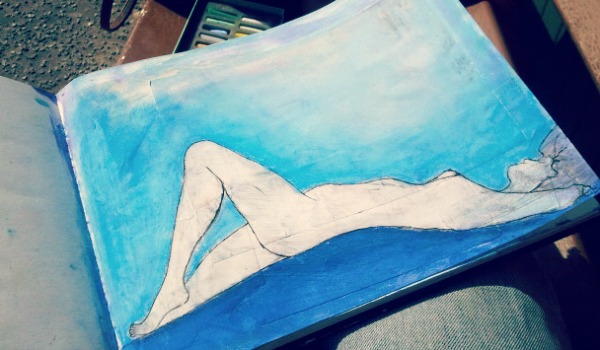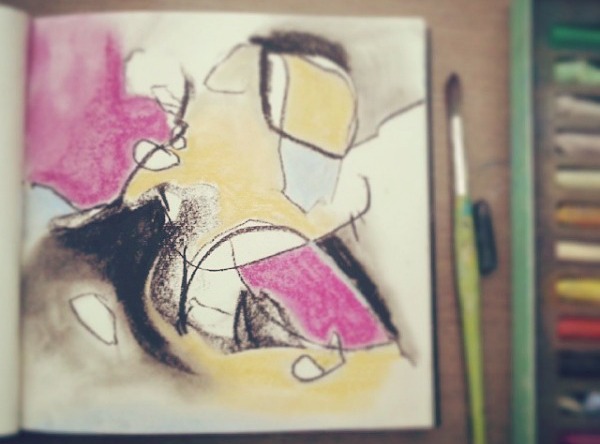People often ask me about how to use art materials as a beginner, and it’s sparked an idea to build up a library of short workshops on specific tools and techniques. If you’re familiar with my work you’ll know that this isn’t going to be a traditional ‘how to’.
My philosophy is that if something isn’t easy and fun, it makes it harder to begin. There may be more to learn later but when I’m learning something new I want it to be instantly accessible and adaptable to how I work as an individual. I want to make art my way, rather than copying the teacher. So that’s the way I endeavour to teach, and what I plan for these workshops.
Enough to get started without overwhelm, and to make something you love while enjoying the process and opening doors to what’s possible.
Each new workshop will be introduced with a blog post on the basics so you can get started. Then if you’d like to learn more you can take the workshop. Details to be confirmed but for now, if you’re interested in the workshops you can add your details at the end of this post and I will alert you whenever a new one is ready. And if you’d rather stick with the free option, consider this post a starter kit in the basics. 🙂
Soft Pastels
What are soft pastels exactly?
Soft pastels, not to be confused with chalk pastels, are little sticks of powdery goodness available in a multitude of delicious colours. They are made of pigment and a binder, and usually come in short sticks, although they are also available in pencil form.
How do I know which ones to buy?
As with most art supplies, the more you spend the better the quality, generally speaking. However, they can often be bought in singles if you want to try before you invest, and you can also buy cheaper pastel sets to see if you like the general idea of them before splashing out. The added bonus of this is that if and when you do upgrade, the new ones will be even more amazing because you’ll be able to see a marked difference from the cheaper ones.
What paper should I use?
There is paper made specifically for use with soft pastels which has a ‘tooth’ or a grain. The options run from being like rough sandpaper to the touch, right through to a much softer texture. Smooth paper is not recommended as the pastel has nothing to grip onto.
This makes sense of course, but if you want to use smooth paper, I always recommend experimenting and seeing what it’s like for yourself. You may discover that the way you want to use pastels is more conducive to smooth paper. As always, don’t let conventions hold you back!
How do I use the pastels?
Like any pastels, they can be used to make an array of marks, either by using the side to cover larger areas, or the end to add more detail. Blending is done either with fingers – bearing in mind the skin carries oils that can affect the colour – or special rubber brushes, sponges and other tools you will find alongside the soft pastels in the art store. You may also find that you have things at home you can use, such as cotton buds.
How do I protect or seal my soft pastel drawings?
If you’re framing them, don’t use perspex as the powder sticks to it; use glass. To keep the pastels from smudging, see the note about fixative below. If you’re packaging them up to send or wanting to store them without them smudging against the back of the one on top, you can use glassine sheets or envelopes, which are acid free and protect without messing up your lovely work. I found some on Amazon.
What else do I need to know right now?
Baby wipes will be a huge bonus. Soft pastel dust does like to migrate, and if you’re blending with your fingers you’re going to be Edward Colourhands really quickly, so baby wipes are great for cleaning up both you and your surroundings quickly and easily.
Fixative spray is another thing you may want to try for yourself, especially since preference varies widely on this topic. If you do use it, I recommend a proper fixative spray over hair spray; it’s made especially for the purpose and if used carefully is less likely to ruin your masterpiece by darkening it or making an uneven coating full of blobs.
A good rule of thumb for fixative is to shake it thoroughly, hold it about 30cm or more away from the work, and spray a couple of layers of a fine even mist over it. Think tentative rather than bull in a china shop, and I recommend doing a test before spraying your final piece.
If you have any questions about using soft pastels, let me know in the comments – I’m no pro but will gladly share whatever I know that might be helpful. 🙂












Thank you very instructive and I love pastels!
Hello Tara
Thanks for the valuable information. You said Soft pastels, not to be confused with chalk pastels…
I am a pastelist and sometimes refer to my soft pastels as chalk pastels when explaining to someone what the medium is. Can you please tell me the difference?
Thanks very much.
Hi Leigh-Ann – I’m not a pro at pastels myself, but as I understand it, soft pastels are literally softer, whereas chalk pastels tend to have a harder consistency. I think the terms are often used interchangeably too.